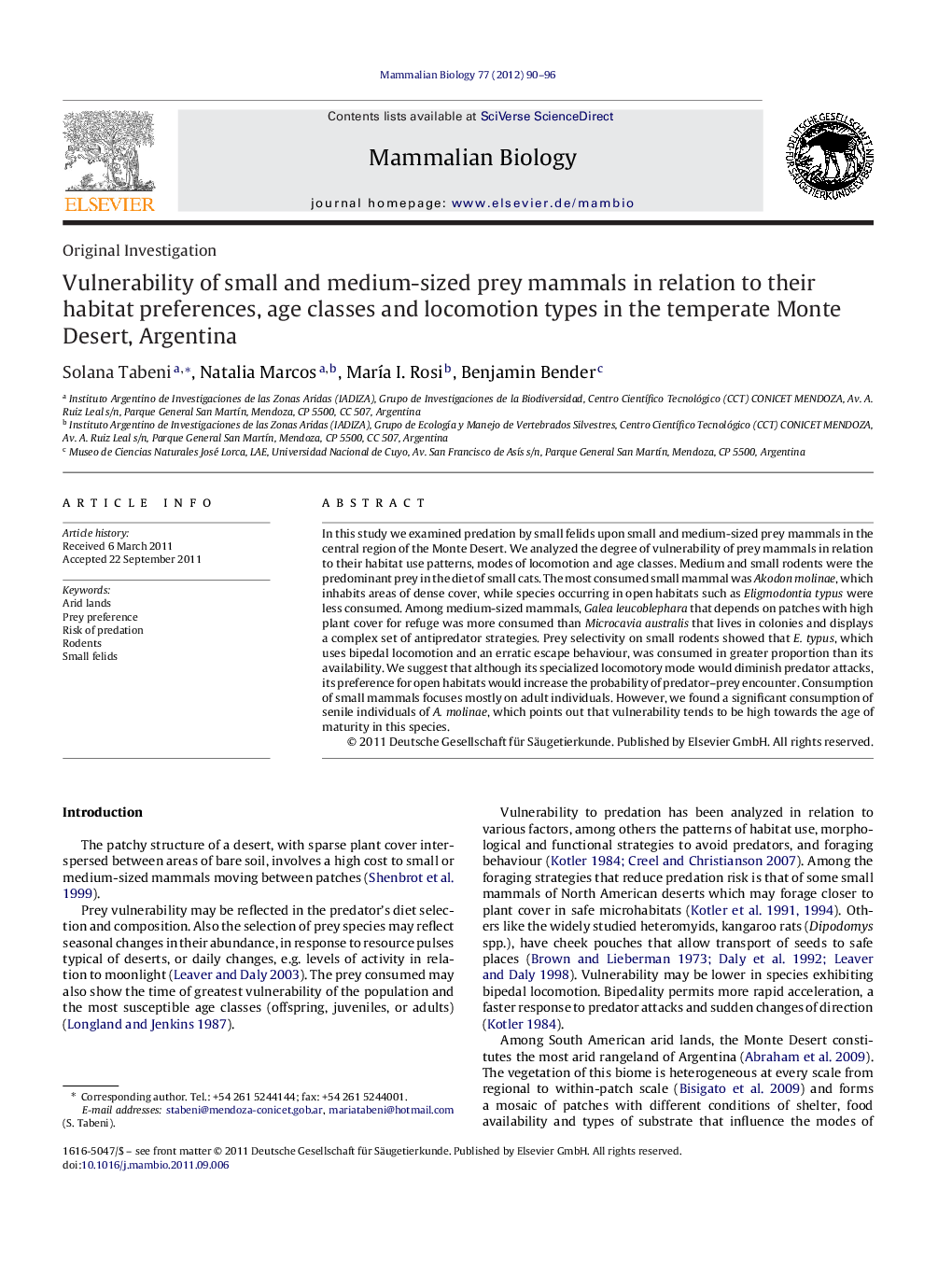| کد مقاله | کد نشریه | سال انتشار | مقاله انگلیسی | نسخه تمام متن |
|---|---|---|---|---|
| 2193784 | 1098397 | 2012 | 7 صفحه PDF | دانلود رایگان |

In this study we examined predation by small felids upon small and medium-sized prey mammals in the central region of the Monte Desert. We analyzed the degree of vulnerability of prey mammals in relation to their habitat use patterns, modes of locomotion and age classes. Medium and small rodents were the predominant prey in the diet of small cats. The most consumed small mammal was Akodon molinae, which inhabits areas of dense cover, while species occurring in open habitats such as Eligmodontia typus were less consumed. Among medium-sized mammals, Galea leucoblephara that depends on patches with high plant cover for refuge was more consumed than Microcavia australis that lives in colonies and displays a complex set of antipredator strategies. Prey selectivity on small rodents showed that E. typus, which uses bipedal locomotion and an erratic escape behaviour, was consumed in greater proportion than its availability. We suggest that although its specialized locomotory mode would diminish predator attacks, its preference for open habitats would increase the probability of predator–prey encounter. Consumption of small mammals focuses mostly on adult individuals. However, we found a significant consumption of senile individuals of A. molinae, which points out that vulnerability tends to be high towards the age of maturity in this species.
Journal: Mammalian Biology - Zeitschrift für Säugetierkunde - Volume 77, Issue 2, March 2012, Pages 90–96